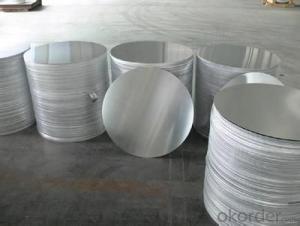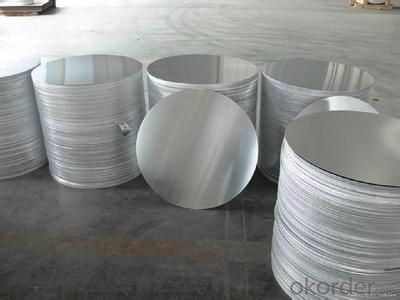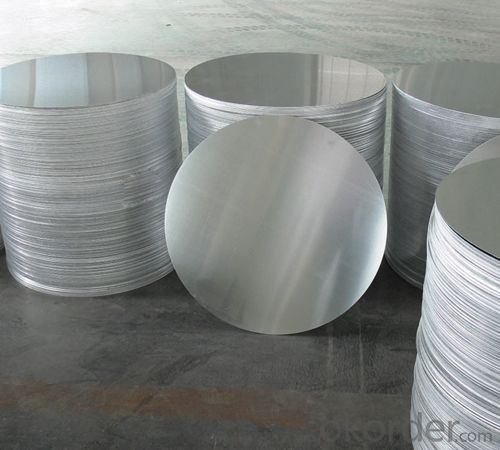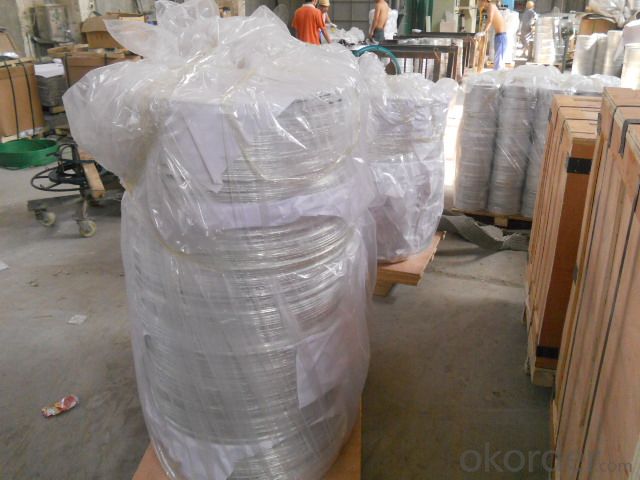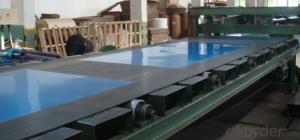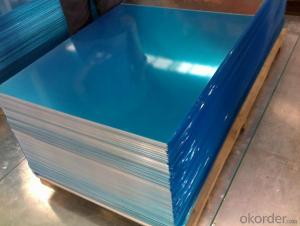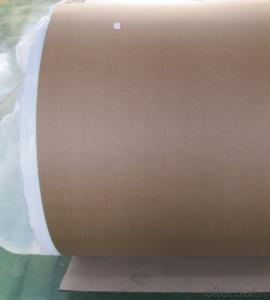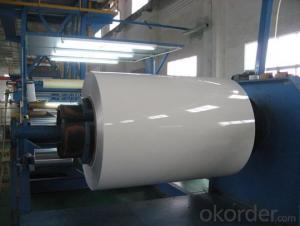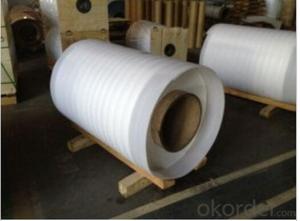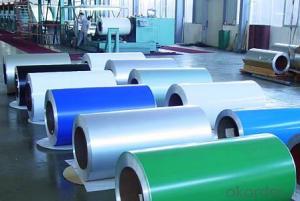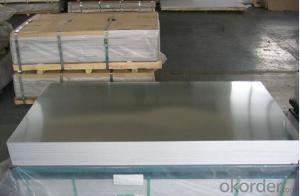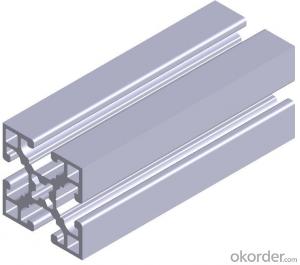Aluminum Sheets in Colorado for Couscousier Pot Making
- Loading Port:
- Shanghai
- Payment Terms:
- TT OR LC
- Min Order Qty:
- 2 m.t.
- Supply Capability:
- 2000 m.t./month
OKorder Service Pledge
OKorder Financial Service
You Might Also Like
Specification
Structure of Aluminium Circle for Couscoussier Pot Making Description:
Coated aluminum coil/sheet are of a wide range of colors, which gives wonderful appearance no matter in residential and commercial constructions of great exhibition centers.
The coated aluminum coil/sheet have been widely used in the fields of construction and decoration( garage doors, ceiling etc.), electronic appliances, lighting decoration, air-condition air pipes, sandwich panels and drainages etc.
Main Features of the Aluminium Circle for Couscoussier Pot Making:
1) High flexibility
2) Impact resistance
3) Excellent weather-proof durability
4) Anti-ultraviolet
5) High erosion resist
Images of the Aluminium Circle for Couscoussier Pot Making:

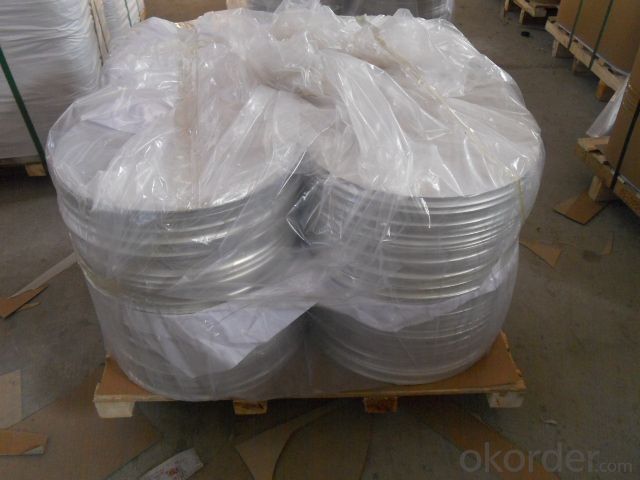
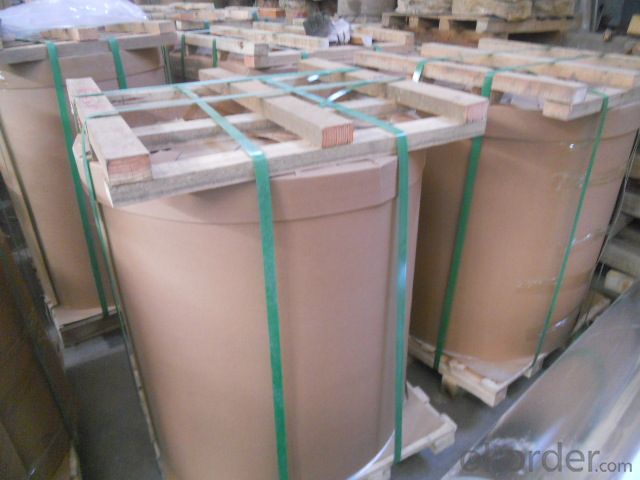
Aluminium Circle for Couscoussier Pot Making Specification:
Alloy | A1100,A3003,A1050,A8011 etc |
Temper | H16,H18,H24 |
Thickness | From 0.024mm to 1.2mm |
Width | Standard width:1240mm |
Special width:1300mm,1520mm,1570mm,1595mm | |
Diameter | Standard dia:1200mm |
Interior dia:150mm,405mm,505mm | |
Weight | 2.5 T/coil,3.0 T/coil |
Coating | PE, PVDF, AC |
Surface | Embossed, mill finish, coated |
Color | AS to code RAL |
Gloss | 10-90%(EN ISO-2813:1994) |
Coating Thickness | PE: more than 18 micron |
PVDF: more than 25 micron | |
Coating Hardness (pencil resistance) | More than 2h |
Coating adhesion | 5J(EN ISO-2409:1994) |
Impact Resistance | No peeling or cracking(50 kg/cm,ASTMD-2794:1993) |
Flexibility (T-bend) | 2T |
MEK resistance | More than 100 |
FAQ
a.What is monthly capacity
---CNBM is one stated own company and our monthly capacity is about 2000tons.
b. Now which countries do you export your goods?
---Now we export to South East Asia,Africa, North America,South America ect.
- Q: Can aluminum sheet be painted?
- Yes, aluminum sheet can be painted. However, it is important to properly prepare the surface before painting to ensure that the paint adheres well and lasts longer. The process usually involves cleaning the aluminum sheet to remove any dirt, grease, or oxidation, followed by applying a primer to promote better adhesion. Once the primer is dry, you can then apply the paint of your choice. It is recommended to use a high-quality paint suitable for metal surfaces to achieve the best results. Additionally, if the aluminum sheet will be exposed to outdoor elements, it is advisable to use a paint that is specifically formulated for exterior use, in order to provide protection against weathering and corrosion.
- Q: Hi everyone, I have this problem that I'm somewhat confused about. The problem is:An alloy of aluminum and magensium was treated with sodium hydroxide solution, in which only aluminum reacts to give hydrogen gas:2Al + 2NaOH + 6H20 --gt; 2NaAl(OH)4 + 3H2If a sample of alloy weighing 1.118 g gave 0.1068 g of hydrogen, what is the percentage aluminum in the alloy?How do I account for the magnesium and what stoichiometric relationships would I need to set-up? This is very confusing, but I appreciate the slightest of help on this!Thank you.
- You don't need to worry about the magnesium at all, because it doesn't enter into the reaction. You have a balanced equation for aluminium and hydrogen, and the data given are sufficient: From the equation, you know that 2 moles of aluminium produce 3 moles of H2. 0.1068 g of H2 were produced, so divide this by molecular mass of H2 (2.016) to determine the moles of H2 produced. You know that 3 moles of H2 would have been produced from 2 moles of Al. Therefore, multiply the moles of H2 by 2/3, to determine the moles of Al that were present. Now multiply this number by the atomic mass of Al, to determine the grams of Al. Now divide this number if grams by 1.118 and multiply by 100 to determine % Al present in the alloy.
- Q: Are 101 aluminum sheets suitable for chemical transfer piping?
- No, 101 aluminum sheets are not suitable for chemical transfer piping. Aluminum is generally not recommended for handling certain chemicals due to its reactivity and potential for corrosion. It is more commonly used in industries that require lightweight materials and good thermal conductivity, such as aerospace or construction. For chemical transfer piping, it is advisable to use materials that are resistant to corrosion and can withstand the specific chemicals being transported, such as stainless steel, PVC, or high-density polyethylene (HDPE).
- Q: Can 101 aluminum sheets be anodized for medical equipment applications?
- Yes, 101 aluminum sheets can be anodized for medical equipment applications. Anodizing is a process that creates a protective layer on the surface of aluminum, enhancing its corrosion resistance, durability, and aesthetic appearance. It is commonly used in the medical industry to improve the performance and longevity of equipment, as well as to maintain cleanliness and sterility. The specific alloy of aluminum used, such as 101, does not typically impact the anodizing process, as anodizing can be applied to various grades of aluminum. However, it is important to consult with an anodizing specialist or manufacturer to ensure that the specific alloy is suitable for the intended medical equipment application and to determine the most suitable anodizing process and specifications.
- Q: What is the elongation percentage of 101 aluminum sheets?
- The elongation percentage of 101 aluminum sheets typically ranges between 12% and 30%, depending on the specific grade and thickness of the sheet.
- Q: This question asks for the method to determine the quantity of aluminum sheet required for a specific project.
- <p>To calculate the amount of aluminum sheet needed for a project, first determine the dimensions of the area to be covered. Measure the length and width to find the total area in square units. If the project involves complex shapes, break it down into simpler shapes like rectangles and circles, and calculate the area for each. Multiply the total area by the thickness of the aluminum sheet required. Finally, consider any additional material for overlaps or wastage, typically around 5-10%. The total volume calculated will give you the amount of aluminum sheet needed for the project.</p>
- Q: Can aluminum sheets be used for sound insulation?
- Yes, aluminum sheets can be used for sound insulation to some extent. While aluminum is not the best material for soundproofing compared to others like rubber or foam, it can still provide some level of sound insulation when used correctly. Aluminum sheets can be installed as a barrier or partition in walls, ceilings, floors, or other surfaces to reduce the transmission of sound waves. However, it is important to note that additional soundproofing materials or techniques might be necessary to achieve optimal results.
- Q: What is the thermal expansion coefficient of aluminum sheets?
- The thermal expansion coefficient for aluminum sheets measures around 23.1 x 10^-6 per degree Celsius, resulting in a length expansion of 23.1 parts per million for every one-degree Celsius temperature rise. Nevertheless, it's worth noting that this coefficient might slightly differ depending on the exact alloy and manufacturing technique employed in the production of the aluminum sheet.
- Q: I put the aluminum in copper chloride for an experiment and i was wondering if they had different properites.
- Aluminium is and element. An oxide is the result of a substance reacting with oxygen. The properties are completely different for elements and oxides.
- Q: This question asks about the various types of aluminum foil used specifically for the purpose of food packaging.
- <p>Aluminum foil used for food packaging comes in several types, each with specific applications: 1. Heavy-duty foil: Strong and durable, used for roasting meats and baking. 2. Light-duty foil: Thinner and more flexible, ideal for lining baking sheets and wrapping foods. 3. Reynolds Wrap: A brand known for its non-stick and heavy-duty aluminum foils, suitable for a wide range of cooking and baking needs. 4. Aluminum foil rolls: Available in various widths, used for general food wrapping and sealing. 5. Pre-cut aluminum foil squares: Convenient for individual food portions and small wrapping tasks. Each type offers different levels of heat resistance, malleability, and non-stick properties, catering to diverse food packaging requirements.</p>
Send your message to us
Aluminum Sheets in Colorado for Couscousier Pot Making
- Loading Port:
- Shanghai
- Payment Terms:
- TT OR LC
- Min Order Qty:
- 2 m.t.
- Supply Capability:
- 2000 m.t./month
OKorder Service Pledge
OKorder Financial Service
Similar products
Hot products
Hot Searches
Related keywords
